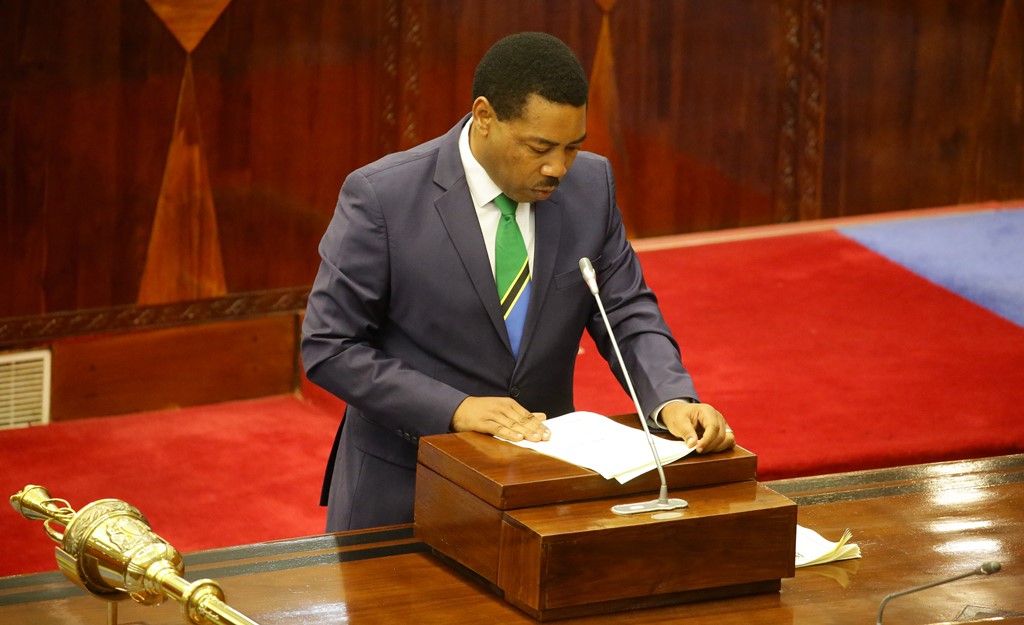AfricaPress-Tanzania: THE implementation of the third National Development Plan (NDP) slated for 2021/22, to 2025/26 is expected to cost 114.8tri/-, as the public sector is scheduled to spend 74.2 tri/- while the remaining 40.6tri/- is set to be spent in the private sector.
The plan that aims at strengthening the country with the competitive industrial economy would be implemented along with five priorities that are influencing the competitive economy, enhancing more production capacity in the available industries, supporting growth of business, paying attention to people’s development as well as supporting human resources management.
Tabling the proposals for the plan in the House on Monday on behalf of the Minister for Finance and Planning Dr Phillip Mpango, the Minister for Constitutional and Legal Affairs, Dr Mwigulu Nchemba said the implementation of the plan has considered Tanzania Development Vision 2025.
“The plan has also put in place President John Magufuli’s inaugural speeches in the 11th and 12th Parliaments, five-year development plan and other related documents delivered from research for higher learning institutions,” said Dr Nchemba.
According to him, the implementation of the five-year Nation Development Plan will be achieved where there is a sustainable peace, unit and tranquility, as well as the country’s ability to face an eruption of diseases and natural hazards, as well as effective participation of the private sector and improved production in the agriculture sector.
The plan among other things focuses on increasing the annual national income from 6 per cent in 2021 to 8 per cent in 2026, with the collections in local government councils being expected to increase from 15.9 per cent in 2021/22 to 16.8 per cent in 2025/26.
“The inflation is expected to remain on single digit form, at a range of between 3 and 5 per cent respectively,” he said.
Going forward, Dr Nchemba said the reserve in foreign currency on import of goods and services will continue to meet the ceiling of a minimum of 4 months, as well as active involvement of the private sector in creating eight million new employments between July 2021 and June 2026.
Giving out the assessment on the implementation of the second five-year national development plan implemented in the fiscal year 2016/17- 2020/21, as assessed by the Economic and Social Research Foundation (ESRF), the minister said between 2016/17-2019/20 the national income increased to 6.9 per cent while inflation remained at 4.1 per cent which was within the target.
He said the target was to make sure the inflation remains below 5 per cent. In the meantime, the reserve for foreign currency remained at an average of sustaining import of goods and services in a period of 4.9 months, above the ceiling of 4 months.
Throughout the period, the national debt remained sustainable in short, medium and long terms while the income per capita increased from 2,225,099 (equals to 1,022 US dollars) in the year 2016 to 2,577,967 (equivalent to 1,080 US dollars )in 2019.
“The vivid example of the economic growth of the country was Tanzania’s entry to the list of low-middle income economies in July 2020,” he told the House.
According to the minister, the implementation of the second five year plan was estimated to cost 107tri/- with 59 tri/- being expected from the Public Sector and the remaining 48tri/- from the private sector.
However, in the four years of its implementation, a total of 67.5tri/- was spent, on which 34.9tri/- was spent through public sector, which was equivalent to 76.5 per cent of the four year target, while the private sector spent 32.6tri/- equivalent to 85 per cent of the target.
“In a period of four years the private sector had planned to spend 38.4 tri/- while the public sector estimated 45tri/- on implementing the national development plan,” he added.
Speaking on the industrial sector, the minister said for the past four years a total of 8,477 industries were constructed among which 201 were big industries, 460 medium industries, 3,406 small scale industries, 4,410 small- small scale industries.
“This increase has added a number of industries in the country from 52,633 in 2015 to 61,110 in 2019, hence the increase in the availability of different manufactured goods for domestic and export,” he said.







